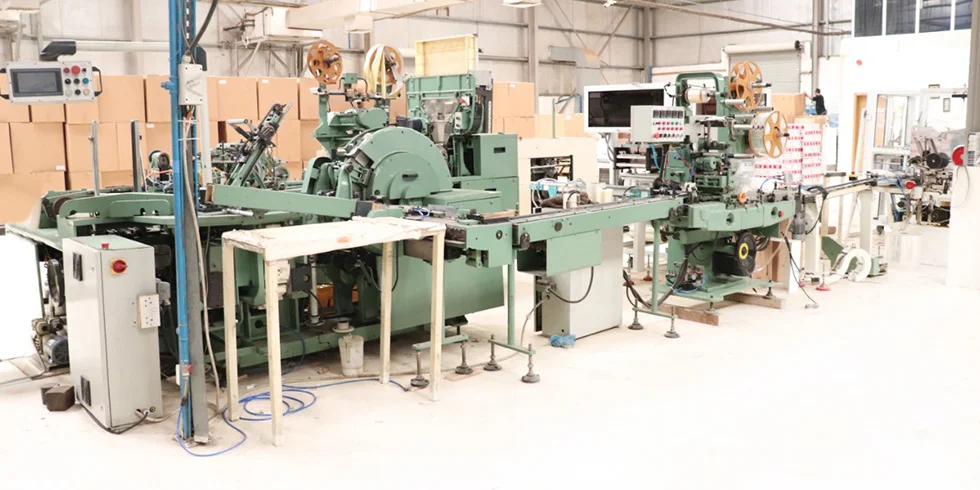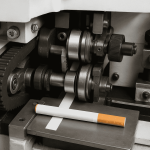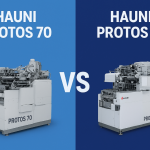Cigarette manufacturing is a highly competitive industry, where efficiency plays a crucial role in maintaining profitability and meeting consumer demand. One of the key innovations significantly enhancing production speed is the cigarette box packing machine. This equipment automates the packaging process of cigarettes, ensuring faster and more efficient operations. With features designed for various packaging formats, including soft packs, hard packs, and flip-top cartons, these machines improve overall productivity. As manufacturers strive to optimize their production lines, understanding the impact of cigarette box packing machines becomes essential for driving efficiency and maximizing output in the tobacco industry.
1. Automation of the Packing Process
One of the primary ways a cigarette box packing machine boosts production speed is through automation. Manual packing is time-consuming and labor-intensive, often leading to inconsistencies and delays. These packing machines automate several critical steps, including filling, sealing, and labeling. By automatically filling packs with cigarettes, the machines ensure a consistent product without the variability associated with manual labor. Furthermore, the sealing process is streamlined, securing each pack efficiently. The labeling is done with precision, ensuring compliance with regulatory requirements. This automation minimizes human error and allows manufacturers to achieve higher output rates, facilitating continuous production without interruptions.
2. Increased Throughput
Cigarette box packing machines are engineered for high throughput, capable of packaging thousands of cigarette packs per hour. Advanced models can achieve speeds of up to 3,000 packs per minute, drastically reducing the time taken to complete the packing phase of production. This increased throughput is crucial for manufacturers who need to keep up with high consumer demand while managing production costs effectively. Key benefits of increased throughput include:
- Reduced Packaging Time: Quicker turnaround from production to packaging.
- Improved Product Availability: Consistently meeting market demand.
- Enhanced Operational Efficiency: Streamlined processes lead to better overall productivity.
Additionally, the high-speed operation allows for better alignment with upstream processes, ensuring a seamless flow of products from production to packaging. By enhancing throughput, these machines help manufacturers meet market demands swiftly and efficiently, thus improving overall productivity.
3. Enhanced Quality Control
Cigarette box packing machines contribute to enhanced quality control, a vital aspect of production speed and efficiency. Automated systems incorporate advanced technologies, such as sensors and cameras, to monitor the packing process in real time. These systems can detect inconsistencies, such as misaligned packs or improper seals, and immediately alert operators or automatically reject defective products. This proactive approach reduces the risk of faulty products reaching consumers and minimizes waste, as fewer packs need to be discarded. By ensuring that each pack meets quality standards, manufacturers can maintain high production speeds while delivering reliable products to the market, enhancing customer satisfaction.
4. Flexibility in Packaging Options
Modern cigarette box packing machines offer flexibility in packaging options, accommodating various cigarette formats and sizes. This adaptability allows manufacturers to switch between different packaging styles without significant downtime, which is critical for responding to market trends and consumer preferences. Key advantages of this flexibility include:
- Rapid Changeovers: Quick adjustments to different pack sizes and formats.
- Diverse Product Offerings: Ability to produce a wide range of cigarette products.
- Market Responsiveness: Quickly adapting to new consumer demands and trends.
Whether producing soft packs, hard packs, or flip-top cartons, these machines can be quickly adjusted to meet changing requirements. This flexibility not only boosts production speed but also enables manufacturers to diversify their product offerings. As consumer demands evolve, the ability to rapidly change packaging formats without lengthy setup times enhances operational efficiency and positions companies to capitalize on emerging market opportunities.
5. Cost Efficiency and Labor Savings
Investing in a cigarette box packing machine leads to significant cost efficiency and labor savings. By automating the packing process, manufacturers can reduce their reliance on manual labor, lowering labor costs associated with hiring and training employees. Moreover, the machine’s high-speed operation minimizes production downtime, maximizing output while maintaining quality. The reduced need for manual intervention allows operators to focus on other critical areas of production, further improving overall efficiency. Additionally, the precision of automated packing reduces material wastage, contributing to lower operational costs. In this way, the investment in packing machinery not only boosts production speed but also enhances profitability.
6. Improved Ergonomics and Safety
The integration of cigarette box packing machines significantly enhances ergonomics and safety in the workplace. By automating the physically demanding tasks associated with manual packing, these machines reduce the risk of injury to workers, particularly related to repetitive strain and heavy lifting. Key safety features include:
- Emergency Stop Buttons: Provides instant shutdown in case of emergencies.
- Safety Guards: Prevents access to moving parts during operation.
- Heat-Resistant Components: Minimizes risk associated with high-temperature areas.
Operators can manage the machines with minimal physical exertion, leading to a safer working environment. Additionally, modern machines come equipped with safety features, such as emergency stop buttons and safety guards, further protecting operators. By prioritizing ergonomics and safety, manufacturers not only comply with industry regulations but also foster a healthier workplace culture, ultimately contributing to improved productivity and morale among staff.
Conclusion
In conclusion, cigarette box packing machine is pivotal in enhancing production speed within the tobacco industry. Their automation capabilities streamline the packing process, significantly increasing throughput and ensuring high-quality standards. The flexibility in packaging options allows manufacturers to adapt to changing market demands swiftly, while cost efficiency and labor savings contribute to overall profitability. Additionally, improved ergonomics and safety features promote a healthier working environment for operators. As the demand for cigarettes continues to grow, investing in advanced packing machinery is essential for manufacturers looking to optimize their production processes and maintain a competitive edge in the market.





